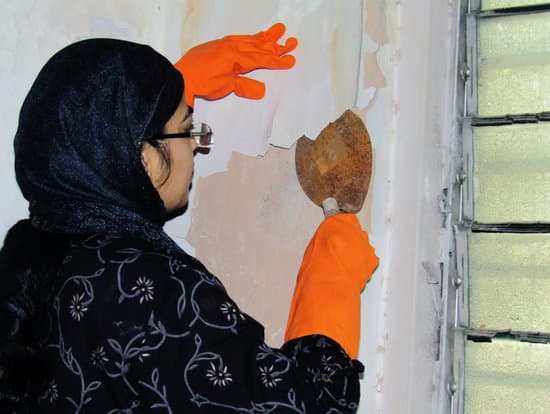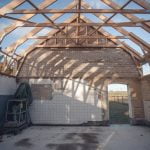Can you claim home improvement on your taxes? Many homeowners often wonder about the possibility of deducting expenses related to home improvements on their tax returns.
Understanding the intricacies of tax deductions for home improvements can potentially save you money and provide some relief when it comes to renovating or repairing your home. This section will delve into the specifics of what can and cannot be claimed, as well as how to ensure that you are maximizing your deductions within the boundaries of the law.
When it comes to tax deductions for home improvements, it is essential to know which types of expenses are eligible for claiming. From energy-efficient upgrades to medical necessity modifications, certain improvements can qualify for deductions if they meet specific criteria set by the IRS. It is crucial to familiarize yourself with these guidelines to make sure that you are not missing out on any potential savings.
Documenting your home improvement expenses is a critical step in substantiating your claims when filing your taxes. Keeping organized records, receipts, invoices, and proof of payments will not only help you accurately report your expenses but also protect you in case of an audit.
Additionally, understanding the limitations and restrictions on claiming home improvements on your taxes can prevent any unforeseen issues down the line. Stay informed about what is allowed and what is not to avoid any penalties or complications with the IRS.
Types of Home Improvements Eligible for Tax Deductions
When it comes to claiming deductions on your taxes for home improvements, it is essential to understand what types of projects qualify. Typically, home improvements that increase the value of your property or prolong its useful life may be eligible for tax deductions.
This could include renovations like adding a new bathroom, kitchen upgrades, installing a new roof, or even adding a deck to your home. It’s important to keep in mind that regular repairs and maintenance usually do not qualify for tax deductions.
One key aspect to consider when determining whether your home improvement project qualifies for a tax deduction is whether it has lasting benefits for your property. Projects that improve the energy efficiency of your home, such as installing solar panels or energy-efficient windows, are often eligible for tax credits rather than deductions. These credits can directly reduce the amount of taxes you owe, offering an additional incentive for certain types of home improvements.
| Types of Home Improvements | Eligibility for Tax Deductions |
|---|---|
| Kitchen upgrades | Usually qualify if they add value to the property |
| New roof installation | Potentially eligible if it extends the useful life of the property |
In some cases, individuals may wonder if smaller-scale projects like painting a room or replacing appliances can also be considered for tax deductions. Unfortunately, these types of cosmetic improvements typically do not meet the criteria unless they are part of a larger renovation that substantially increases the value or functionality of your home.
It’s always advisable to consult with a tax professional or accountant to determine which specific home improvement expenses you can claim on your taxes based on current regulations and guidelines.
Furthermore, keeping thorough documentation of all expenses related to your eligible home improvement projects is crucial when it comes time to claim them on your taxes. This includes invoices, receipts, contracts with contractors, and any permits obtained for the work done. By maintaining detailed records, you can provide evidence of the costs incurred and ensure that you have accurate information available if audited by the IRS regarding your claimed home improvement expenses.
Documenting Your Home Improvement Expenses
When it comes to claiming home improvements on your taxes, one of the most important aspects is documenting your expenses properly. This not only ensures that you are accurately reporting your expenditures to the IRS but also provides necessary evidence in case of an audit. Here are some tips on how to effectively document your home improvement expenses:
- Keep all receipts and invoices related to the home improvement project. Make sure they clearly outline the date, amount, and nature of the expense.
- Take before and after photos of the renovated areas in your home. These visual records can serve as proof of the improvements made.
- Maintain a detailed record of any labor costs incurred during the project, including payments to contractors or service providers.
In addition to documenting your expenses, it is essential to understand which types of home improvements can you claim on your taxes The IRS has specific guidelines regarding eligible deductions for home improvements, so it’s crucial to know what qualifies. Some common types of home improvements that can you claim on your taxes include:
- Energy-efficient upgrades such as solar panels or energy-efficient windows
- Medical modifications for accessibility purposes
- Home office renovations for self-employed individuals
By keeping detailed records and knowing which home improvements qualify for tax deductions, you can claim home improvement on your taxes with confidence. This proactive approach not only helps you maximize your deductions but also ensures compliance with IRS regulations.
Limitations and Restrictions on Claiming Home Improvements on Your Taxes
When it comes to claiming home improvements on your taxes, there are several limitations and restrictions that you need to be aware of. While home improvement expenses can potentially provide tax benefits, not all renovations or repairs qualify for deductions. Understanding these limitations can help you avoid any issues with the IRS and ensure that you maximize your tax savings.
Here are some key limitations and restrictions to keep in mind when claiming home improvements on your taxes:
- Only certain types of home improvements qualify for tax deductions, such as those that increase the value of your home or make it more energy-efficient.
- Homeowners must itemize their deductions in order to claim home improvement expenses on their taxes. This means keeping detailed records of all renovation costs and receipts.
- There are limits on the amount of home improvement expenses that can be deducted each year. Additionally, some deductions may be subject to phase-out based on income levels.
It’s important to note that not all home improvement expenses can you claim home improvement on your taxes, so it’s crucial to consult with a tax professional or accountant to determine which renovations qualify for deductions. By understanding the limitations and restrictions associated with claiming home improvements on your taxes, you can navigate the process effectively and potentially save money come tax season.
How to Claim Home Improvements on Your Taxes
When it comes to claiming home improvements on your taxes, it is essential to understand the process to ensure you receive the deductions you are eligible for. Home improvements that increase the value of your property can potentially be deducted from your taxes, but there are specific criteria that need to be met.
To claim home improvements on your taxes, you must be the owner of the property, and the improvements must be considered capital expenses that enhance the value of the home.
One important thing to note is that regular repairs and maintenance cannot be claimed as tax deductions. However, if you have made significant upgrades such as adding a new room, renovating a kitchen or bathroom, installing energy-efficient systems, or making adaptations for medical reasons, these expenses may qualify for tax deductions. It is crucial to keep detailed records of all your home improvement expenses in case you need to provide documentation to support your claim.
To claim home improvements on your taxes, you will need to itemize your deductions on Schedule A (Form 1040) when filing your federal income tax return. Make sure to include all eligible expenses related to home improvements in the appropriate section and provide accurate information. Additionally, check with a tax professional or utilize tax preparation software to ensure that you are correctly claiming any eligible deductions and maximizing your tax benefits.
| Home Improvement Tax Deductions | Details |
|---|---|
| Qualifying Expenses | Upgrade projects like adding a new room or installing energy-efficient systems. |
| Documentation | Keep detailed records of all expenses related to home improvements. |
| Filing Process | Itemize deductions on Schedule A (Form 1040) when filing federal income tax return. |
Tips for Maximizing Your Home Improvement Tax Deductions
Whether you are planning to renovate your home for personal enjoyment or to increase its resale value, maximizing your home improvement tax deductions can help offset some of the costs. By taking advantage of available tax benefits, you can claim home improvement on your taxes and potentially save money in the process.
Keep Detailed Records of Your Expenses
One crucial tip for maximizing your home improvement tax deductions is to keep meticulous records of all your expenses. This includes receipts, invoices, contracts, and any other relevant documentation that proves the cost of the improvements. The more detailed and organized your records are, the easier it will be to accurately claim these expenses on your tax return.
Educate Yourself on Eligible Home Improvement Tax Deductions
To effectively maximize your home improvement tax deductions, it is essential to educate yourself on what types of improvements are eligible for tax benefits. Generally, improvements that add value to your home or make it more energy-efficient qualify for deductions. Examples include installing solar panels, upgrading HVAC systems, adding a new roof, or remodeling a kitchen or bathroom. By understanding the specific criteria for eligible improvements, you can claim home improvement on your taxes confidently.
Consult With a Tax Professional
Navigating the complexities of tax laws and regulations related to home improvements can be overwhelming. To ensure that you are maximizing your deductions and complying with all guidelines, consider consulting with a tax professional or accountant. They can provide valuable advice tailored to your specific situation and help you take full advantage of available tax benefits when claiming home improvements on your taxes.
Common Mistakes to Avoid When Claiming Home Improvements on Your Taxes
When it comes to claiming home improvements on your taxes, there are several common mistakes that individuals make which can ultimately result in missed opportunities for tax deductions. Taking the time to understand these pitfalls can help you navigate the process smoothly and ensure that you maximize your potential savings.
Proper Documentation
One of the most common mistakes individuals make when claiming home improvements on their taxes is failing to keep proper documentation. It is crucial to maintain detailed records of all expenses related to the improvement, including receipts, invoices, and contracts. Without this documentation, you may not be able to substantiate your claim in case of an audit.
Eligibility Criteria
Another mistake to avoid is assuming that all home improvements automatically qualify for tax deductions. It’s important to understand the specific eligibility criteria set forth by the IRS. Not all types of home improvements can you claim home improvement on your taxes, so make sure to do your research or consult with a tax professional before making any claims.
Claiming Ineligible Expenses
Claiming expenses that do not qualify as legitimate home improvements is another common error made by taxpayers. Items such as regular maintenance or repairs may not be eligible for tax deductions. Ensure that you are only claiming expenses that meet the IRS guidelines for eligible home improvements.
Case Studies
When it comes to claiming home improvements on your taxes, real-life examples can provide valuable insight into how the process works and what types of improvements may be eligible for deductions. Let’s take a look at a few case studies of homeowners who have successfully claimed home improvements on their taxes.
One common example involves homeowners who have made energy-efficient upgrades to their homes, such as installing solar panels or energy-efficient windows. These types of improvements not only help reduce energy costs but can also qualify for tax credits or deductions. For instance, under the Residential Renewable Energy Tax Credit, homeowners can claim a percentage of expenses related to qualifying renewable energy equipment.
Another scenario involves homeowners who have made modifications to their homes for medical reasons. For instance, if a homeowner installs a ramp or accessible bathroom features for a family member with mobility issues, these expenses may be deductible as medical expenses. Keep in mind that in order to claim these deductions, the modifications must be deemed necessary for medical care.
In other cases, renovations made for the purpose of increasing the value of a home before selling it can also be claimed on taxes. For example, if a homeowner remodels their kitchen or renovates their bathrooms with the intention of selling the property at a higher price, they may be able to deduct certain expenses as home improvement costs.
However, it’s important to keep detailed records and receipts to support these claims. Overall, understanding the specific criteria and requirements for claiming home improvements on your taxes is essential to maximize potential deductions and credits available to you.
Resources for Further Information on Home Improvement Tax Deductions
In conclusion, understanding the tax deductions available for home improvements can potentially save you money when it comes to filing your taxes. By knowing which types of home improvements are eligible for tax deductions and how to properly document your expenses, you can take advantage of these benefits. It’s important to be aware of any limitations and restrictions on claiming home improvements on your taxes to ensure compliance with tax laws.
When it comes to actually claiming home improvements on your taxes, make sure you follow the proper procedures and guidelines set by the IRS. Keeping detailed records and receipts of your home improvement expenses is crucial in case of an audit or verification. With the right documentation, you can confidently claim these deductions without any issues.
If you’re looking to maximize your home improvement tax deductions, consider seeking guidance from a tax professional or using online resources dedicated to this topic. By avoiding common mistakes when claiming home improvements on your taxes, you can ensure that you’re taking full advantage of all the benefits available to homeowners.
Remember that every situation is unique, so it’s always a good idea to do thorough research or consult with an expert before making any claims regarding home improvements on your taxes.
Frequently Asked Questions
What Home Improvements Are Tax Deductible IRS?
Home improvements that are tax-deductible according to the IRS generally fall under the category of medical expenses if they are made for the purpose of medical care. Such improvements may include installing ramps, widening doorways, or modifying bathrooms for accessibility reasons.
What Capital Improvements Are Tax Deductible?
Capital improvements that are tax-deductible typically refer to renovations or upgrades that increase the value of a property. Examples may include adding a room, replacing the roof, upgrading heating or cooling systems, or making structural changes like building an addition.
These types of improvements can often be added to the cost basis of the home and reduce capital gains taxes when selling.
Are Improvements to Home Office Tax Deductible?
Improvements made to a home office can be tax-deductible if they are used exclusively and regularly for business purposes. The IRS allows self-employed individuals and small business owners to deduct expenses related to a home office, such as renovation costs, utilities, insurance, and repairs.
However, it’s important to keep detailed records and ensure compliance with IRS guidelines for claiming these deductions.

I’m thrilled to have you here as a part of the Remodeling Top community. This is where my journey as an architect and remodeling enthusiast intersects with your passion for transforming houses into dream homes.





